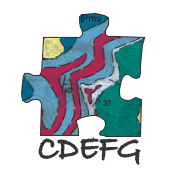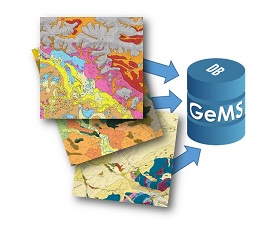
DGGS is leading the Collaborative Database Effort for Geology (CDEFG) to develop a multi-map, multi-user database model for geologic data based on the single-map Geologic Map Schema (GeMS; formerly known as NCGMP09), which was designed and tested by the USGS and state geological surveys. The new multi-map model is intended for use by agencies producing and archiving geologic information, as is a pilot data-sharing protocol to be developed with the model. DGGS is collaborating with other state geological surveys, the U.S. Geological Survey, and the Natural Resources Canada-Geological Survey of Canada to create and refine a model that works for stakeholders. Monthly teleconferences are open to all interested parties. Meeting announcements and project information are available at the project wiki. A multi-map geodatabase will help DGGS meet the future goal of producing a 1:100,000-scale Alaska geologic map compilation and provide a vehicle for other geologic surveys and agencies to organize and share their own geologic data.

This project is funded for three years (Oct. 2016 - Sept. 2019) through a grant from the Environmental Protection Agency's (EPA) Environmental Information Exchange Network. The ultimate goal of the data model and data-sharing protocol is to make geologic data more accessible to the EPA and other users of spatial information and help them make informed decisions that impact human health and welfare.
Two major themes have developed from our work. First, the enterprise database needs to support the process by which geologic maps are made. Data-collection and map-making processes are similar across geologic organizations, although every organization has a different ability to capture these data in an organization-wide database system. Second, the enterprise database must facilitate the organization of geologic data as well as geologic maps, which are traditionally a 2-D cartographically correct representation of the data. Specifications and more information about the draft model are available at the project wiki.

DGGS geologist Mandy Willingham enters geologic observations into a field computer. Eventually all observations and interpretations developed from field work will be loaded into the enterprise database system to build and preserve a cohesive, detailed geologic base layer for Alaska.